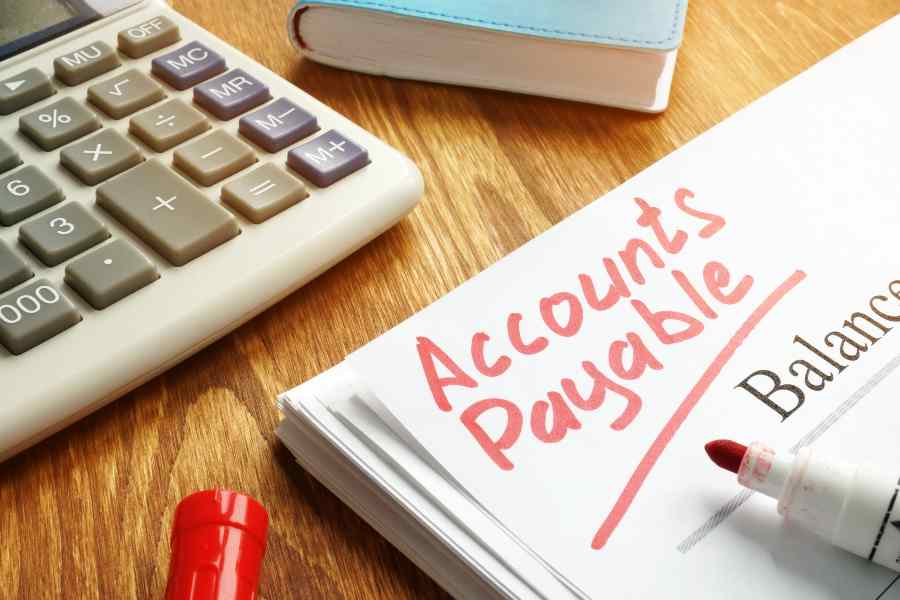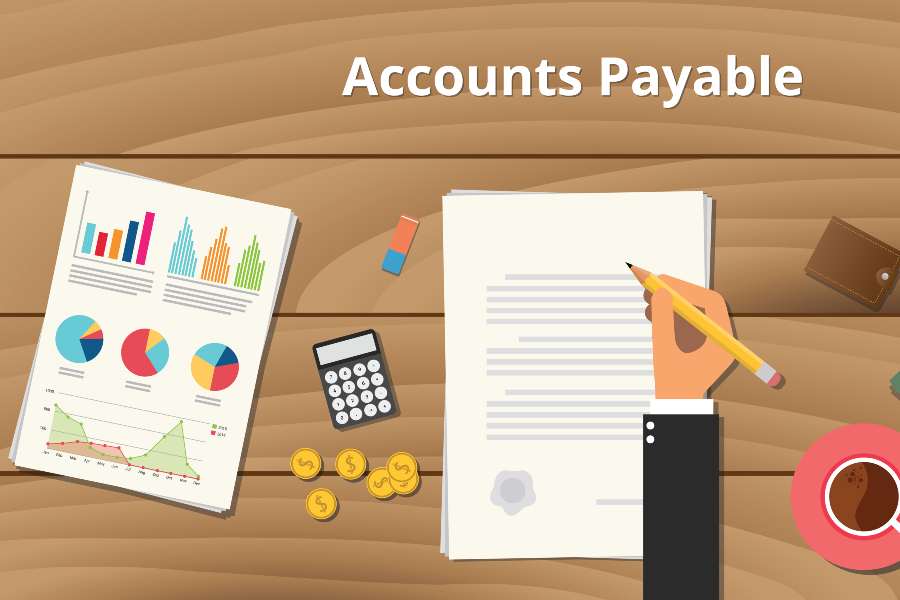Two common but distinct liabilities that businesses encounter are notes payable and accounts payable. Both involve amounts owed, and the main differences between notes payable vs accounts payable lie in the circumstances they arise from and their implications for a company’s financial health.
- Notes payable usually involves borrowing money for specific purposes and includes terms such as interest rates, maturity dates, and repayment schedules.
- Think of it as a written agreement, or promissory note, outlining the loan amount, interest, repayment schedule, and sometimes collateral.
- Accounts payable typically arises from regular business operations and doesn’t involve formal loan agreements.
- Think of it as a short-term loan from the vendor, usually within Net 30 or Net 60 terms.
Notes Payable | Accounts Payable | |
|---|---|---|
Purpose | Involves formal borrowing, typically for larger purposes; funds usually come from banks or lenders | Represents money owed to suppliers for everyday goods and services purchased on credit |
Formality | Is a formal contract with specific terms documented in a promissory note | Is informal; there might be a purchase order but no formal contract |
Term | Can be short-term or long-term, depending on the agreement | Is short-term, typically due within a few months |
Reporting | Is classified as a current liability or a long-term liability, depending on the repayment terms | Is classified as a current liability on the company’s balance sheet |
Interest | Usually involves interest charged on the loan amount—this adds to the total repayment amount | Typically doesn’t accrue interest if you pay the invoice amount by the due date |
Renegotiation | Tends to have stricter terms and less room for renegotiation—unless there’s a predefined clause allowing it | May offer some flexibility for negotiation if you encounter cash flow issues |
How Notes Payable vs Accounts Payable Works
Notes payable involves a more formal loan agreement, usually with a bank or lending institution. The company signs a promissory note, which is a legal document outlining the terms of the loan—including the principal amount, interest rate, and repayment schedule. Notes payable is typically used for larger financing needs and tend to have longer repayment terms than accounts payable, extending into months or even years.
Some common reasons a company might use notes payable include:
- Financing the purchase of major equipment or property
- Covering a temporary cash flow shortage
- Funding business expansion
In contrast, accounts payable is essentially a company’s credit account with its suppliers. When a company purchases goods or services from a vendor and agrees to pay later rather than with immediate cash, that amount is recorded in accounts payable. These are typically short-term debts, with net terms (the time frame to settle the invoice) ranging from 30 to 60 days.
Examples of common uses of accounts payable are:
- Paying for office supplies
- Purchasing inventory for resale
- Paying utility bills
Common Use Cases of Notes Payable vs Accounts Payable
Notes payable and accounts payable are both important financial obligations for businesses, but they serve different purposes and are used in different situations.
Notes Payable Use Cases
- Business loans: When a company borrows money from a bank or financial institution, it typically issues a promissory note outlining the loan terms, including the principal amount, interest rate, maturity date, and repayment terms.
- Equipment purchase: Businesses often use notes payable to finance the purchase of expensive equipment or machinery. The note allows them to spread the cost of the equipment over time.
- Expansion projects: Companies may take out notes payable to fund expansion projects, such as opening a new location, launching a new product line, and investing in research and development.
Accounts Payable Use Cases
- Vendor payments: Businesses buy goods or services on credit from suppliers and vendors, creating accounts payable. These payments are typically due within a specified period, such as 30 days.
- Utilities and services: Companies also have accounts payable for regular expenses, such as electricity, water, internet services, and rent. These bills are paid on a recurring basis.
- Inventory purchases: Retailers and wholesalers often purchase inventory on credit, creating accounts payable until they pay off the supplier invoices.
Our related resources:
Examples of Notes Payable vs Accounts Payable
Notes Payable Example
An example of notes payable involves a company borrowing money from a bank to finance the purchase of new equipment. Let’s say ABC Manufacturing needs to purchase specialized machinery costing $100,000. It negotiates a loan with a bank to cover this expense.
Here’s how the notes payable scenario might play out:
- Note creation: ABC Manufacturing and the bank agree on terms for the loan, including the principal amount, interest rate, maturity date, and repayment schedule. Let’s say they agree on a five-year loan with an annual interest rate of 5%.
- Loan disbursement: Upon agreeing to the terms, the bank disburses $100,000 to ABC Manufacturing. This amount represents the principal of the note payable.
- Note payable recording: ABC Manufacturing records the loan as a note payable on its balance sheet. The initial entry would show a liability of $100,000, representing the amount owed to the bank.
- Interest expense: Over the life of the loan, ABC Manufacturing will incur interest expenses based on the annual interest rate. Each year, they will record interest expense on their income statement and adjust the note payable on their balance sheet accordingly.
- Repayment schedule: ABC Manufacturing makes regular payments to the bank according to the agreed-upon repayment schedule. These payments include both principal and interest amounts.
- Notes payable reduction: With each payment, the notes payable balance decreases. ABC Manufacturing records these payments by reducing the notes payable on the balance sheet and recording interest expenses in its income statement.
By the end of the loan term, ABC Manufacturing will have fully repaid the $100,000 principal plus accrued interest, completing the note payable obligation.
Accounts Payable Example
Let’s consider an example of accounts payable in a typical business scenario. XYZ Retail is a small clothing store that purchases inventory from various suppliers on credit terms.
- Inventory purchase: XYZ Retail purchases $10,000 worth of clothing items from Supplier A on credit terms, with payment due in 30 days.
- Transaction recording: Upon receiving the goods, XYZ Retail records the transaction in its accounting records. It debits Inventory (an asset account) for $10,000 and credits Accounts Payable (a liability account) for $10,000.
- Accounts payable aging: As time passes, the A/P aging report shows that the $10,000 payable to Supplier A is due in 30 days.
- Payment due: On the due date or earlier, XYZ Retail prepares a payment to Supplier A for the $10,000 owed.
- Payment recording: XYZ Retail records the payment in its accounting system by debiting Accounts Payable for $10,000 (to reduce the liability) and crediting Cash/Bank for $10,000 (to show the outgoing payment).
- Accounts payable management: Throughout the accounting period, XYZ Retail continues to make purchases on credit from various suppliers, and its accounts payable balance fluctuates accordingly. It manages this balance to ensure timely payments and good relationships with its suppliers.
Frequently Asked Questions (FAQs)
An example of a note payable would be taking out a bank loan to purchase equipment, with a formal promissory note outlining the repayment terms.
Both accounts payable and notes payable are listed as liabilities on the company’s balance sheet. However, the current portion of notes payable (due within one year) is separated from the long-term portion.
Yes, this can happen if a company is unable to pay an outstanding invoice within the agreed-upon terms with a vendor. By converting to notes payable, the company formalizes the debt and negotiates a new repayment schedule with the vendor, including interest.
While accounts payable represent amounts owed, it is generally not considered debt in the same way as notes payable because it arises from routine business transactions and does not involve formal borrowing arrangements. Meanwhile, notes payable represents formal debt obligations as it involves borrowing money with specific repayment terms.
Bottom Line
Understanding the distinction between accounts payable vs notes payable is crucial for effective financial management. Notes payable is typically used for borrowing money for specific purposes or investments, whereas accounts payable represents short-term obligations for goods and services purchased on credit. Ultimately, the best choice depends on your specific circumstances.


